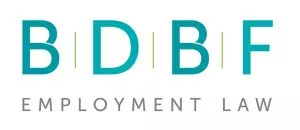In British Airways plc v De Mello and others, the EAT considered whether the exclusion of certain allowances from holiday pay amounted to unlawful deductions from pay. In doing so, the EAT considered when a series of deductions may be broken and whether employers are entitled to designate the order in which different types of leave may be taken.
What happened in this case?
British Airways pays its cabin crew by way of a system of basic pay supplemented by various allowances. Not all of these allowances are reflected in holiday pay. A dispute arose with members of cabin crew about whether different allowances have been included in the calculation of holiday pay. The claimants argued that the allowances represented part of their "normal pay" and so, according to previous case authorities, should be included in holiday pay. The majority of claimants eventually settled their claims, but six claimants continued with the litigation.
The claimants' claim for unlawful deductions from wages reached the Employment Tribunal in 2019. Although the Tribunal held that some of the allowances should have been included in holiday pay, the claim would be limited in value for two reasons. First, the Tribunal held that any gap of three months or more between consecutive deductions from holiday pay would be enough to break the "series". Second, BA had designated the first tranche of annual leave as statutory leave, followed by contractual leave. This would likely result in a break in the series of unlawful deductions towards the end of the holiday year, since it is lawful to pay only basic pay for contractual leave as opposed to "normal pay".
BA appealed the inclusion of one type of allowance in holiday pay and the claimants cross-appealed the decision to exclude some other allowances. The claimants also cross-appealed the Tribunal's decisions that three months between deductions would break the series and that BA had designated the order in which types of annual leave were taken.
What was decided?
Inclusion / exclusion of allowances
The question of whether certain allowances should be included in holiday pay was remitted to a new Tribunal to consider on the basis that the original Tribunal has fallen into error.
- In relation to the inclusion of a generous meal allowance, the Tribunal had gone wrong by placing the burden of proof on BA to show that it should not be included. The burden rested on the claimants to show that the allowance formed part of their normal pay.
- In relation to the exclusion of duty-free sales commission, the Tribunal had wrongly excluded the sums on the basis that they were so small that their exclusion from holiday pay would not have deterred a worker from taking annual leave. The Tribunal was wrong to have discounted these sums on the basis of their size – this was not a relevant factor.
- In relation to the exclusion of a "Back-2-Back" allowance, the Tribunal had excluded it on the basis that it was not paid regularly enough to constitute normal pay (namely three times in a 12-month reference period). The EAT said the Tribunal was overly mechanistic in its approach to the reference period given that the claimant in question had only become entitled to the allowance in the seventh month of the year (i.e. it had actually been paid three times in a five-month period). The reference period should be fairly representative of what is the typical pattern during periods that the worker is working.
Breaking the series of deductions
The EAT overturned the Tribunal's decision that a gap of three months or more between deductions would break the series. The decision of the Supreme Court in Chief Constable of the Police Service of Northern Ireland v Agnew in 2023 had made it clear that the earlier authority on this point (Bear Scotland) was incorrect and that gaps of three months do not necessarily break a series of deductions.
Whether there is a series comes down to whether there is sufficient similarity and a temporal connection between the deductions in question. Although this is a question of fact for the Tribunal to decide, the EAT noted that where there are similar features between the deductions they should be regarded as sufficiently similar, even where there is some difference in detail. In this case, all the deductions related to holiday pay, and all had occurred because BA had failed to treat one or more allowances as normal pay. The EAT substituted a finding that the payments were sufficiently similar.
However, the question of whether there was a sufficient temporal connection between the deductions was remitted to a new Tribunal to determine. Although the series was not automatically broken by gaps of three months or more, the EAT could not rule out the possibility that there might have been gaps long enough to disrupt the series. However, the EAT did appear to offer a steer on this point when it noted that the Tribunal must keep in mind that the purpose of the legislation is to protect vulnerable workers and that there will inevitably be gaps in time between holidays.
Designation of leave
The EAT accepted that in Agnew the Supreme Court did not exclude the possibility of an employer designating the order of annual leave, albeit that they said it could not be done retrospectively to run out a time limit for bringing a claim. However, the EAT said that the exercise of any such power could not be relied upon to make a worker's position in relation to a time limit less favourable than it would have been if the employer had not designated the order of leave.
However, in this case, the Tribunal had erred in finding that BA had made such a designation. The relevant contractual documents did not give BA the power to do this and, even if they did, there was no evidence that it had been exercised. Therefore, all annual leave days were to be treated equally as part of a composite whole (i.e. part statutory leave and part contractual leave). The consequence is that a deduction would have been made every time leave was taken, since normal pay must be paid for a certain proportion of statutory leave.
What does this mean for employers?
This decision follows the Supreme Court's ruling in Agnew and reminds us that gaps of three months or more between deductions will not necessarily break a series of deductions. Whether a series exists is a question of fact for the Tribunal. Although this decision concerns deductions from holiday pay, this principle will apply to all types of deduction from wages where the claimant asserts there has been a series of repeated deductions.
This decision seems to suggest that employers are entitled to designate the order in which leave is taken, although it offers no guidance on how employers should go about this. However, the EAT did seem to accept that a contractual term could potentially give the employer the power to designate, although this will not disadvantage a claimant from a time limit perspective. It is not clear how this would work in practice. Would a Tribunal simply extend time for a claim which is out of time as a result of designation? Or would the designation be ignored for time limit purposes only? The EAT's decision does not address the mechanics of how a claim would be treated as in time in these circumstances.
The reality is that many employers would consider paying normal pay for some types of holiday but only basic pay for other types of holiday to be too administratively cumbersome. Either it involves treating each day's leave as part of a composite pot (requiring a complex calculation for each day's pay) or designating leave (without being certain of how this may be done effectively). In practice, many employers will opt to pay normal pay for all annual leave to avoid these headaches.
British Airways plc v De Mello and others
The content of this article is intended to provide a general guide to the subject matter. Specialist advice should be sought about your specific circumstances.


